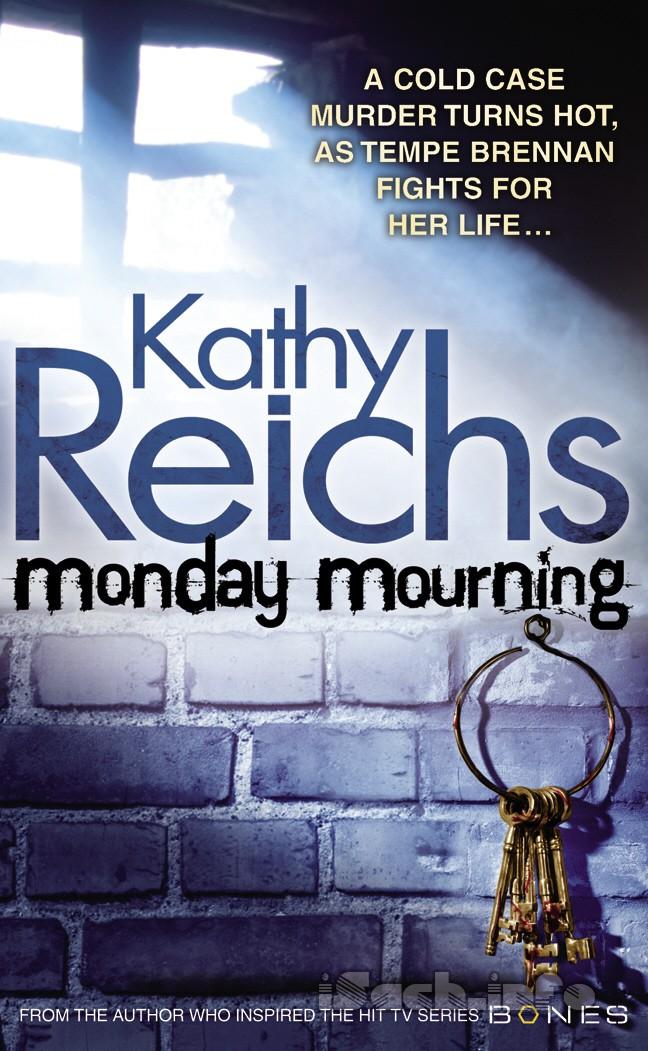Chapter 13
O
UTSIDE, SNOW WAS POWDERING THE STAIRS AND HANDRAILS, and adding to mounds lining the sidewalks and streets. I didn’t care. As soon as I cleared the doors I phoned Claudel.The CUM operator told me Claudel was out. I asked for Charbonneau. Out.
“This is Dr. Brennan from medicolegal. Do you know when either will be back?”
“No.” Distracted. “Tried their beepers?”
“Numbers, please?”
She gave them to me. I dialed and left my cellular as a numeric page for each detective. But I had little hope of an immediate response. Claudel, in particular, was not likely to be diverted from a major operation to call me back on a case in which he had almost no interest.
Next I tried Mrs. Gallant/Ballant/Talent.
No answer.
Working hard to calm myself, I phoned Anne. She was buying ornaments at a Christmas shop.
Anne suggested Le Jardin Nelson for lunch, and started to give directions.
“I know where it is,” I cut her off.
A metered silence, then, “Did we have a bad search?”
“I think I’ve found something. See you in ten.”
Hunching against the snow, I hurried toward place Jacques-Cartier, a pedestrian playground stretching from rue Notre-Dame riverward to rue de la Commune. Lined with restaurants, cafés, and kitschy T-shirt and souvenir shops, le place teems with life during mild weather. Today I shared the square with a handful of tourists, one street artist, and a scraggy yellow terrier pissing on a lamppost.
Flakes were obliterating the cobblestones, the street signs, the pillar memorializing Admiral Nelson, the Englishman who spanked the French at the battle of Trafalgar. Never a favorite with the separatists. Beyond the square, I could see the gauzy blur of the silver-domed Bonsecours Market, City Hall until mothballed by the mansarded Parisian at my back.
Quebec. The Twin Solitudes. One French and Catholic, the other English and Calvinist. The two languages and cultures have butted heads in the province since the Brits seized Montreal in 1760. Place Jacques-Cartier is a microcosm in stone of the linguistic tribalism.
Le Jardin Nelson is located halfway down the west side of the square. The restaurant is squat and solid, with plaza-side terraces under bright blue awnings. A parasoled courtyard with infrared heaters keeps the eatery Montréal chic many months of the year.
This was not one of them. When I entered, Anne looked up over her menu and tracked me across the room.
“It’s really coming down,” I said, removing my parka, then shaking flakes.
“Will it stick?”
“Snow always sticks in Montreal.”
“Excellent.”
“Hm.” I placed my cellular on the tabletop.
A young woman filled water glasses. Anne ordered Crêpes Forestiers and a glass of chardonnay. I went for Crêpes Argenteuil and a Diet Coke.
“Find any treasures?” I asked when the waitress had gone.
Even in a state of apathy, Anne is a commando shopper. She showed me her purchases.
Tangerine wool sweater. Hand-painted Provençal bowl. Six pewter frogs on red satin ribbons.
“Odd choice for the unfettered life,” I said, gesturing at the ornaments.
“I can use them as gifts,” Anne said, rewrapping the tissue.
The waitress delivered drinks. I sipped my Coke, unwound my napkin, positioned my utensils. Adjusted the fork. Aligned the spoon and knife. Repositioned the fork. Checked my cell phone to be sure it was on.
More Coke.
Then I flattened the edges of my place mat with both palms. Straightened the fringe. Picked up the phone. Laid it back down.
Anne raised one analytical brow.
“Expecting a call?”
“I left messages for Claudel and his partner.”
“Are you going to tell me what you discovered?”
I pulled the photocopies and printouts from my purse and stacked them on the side of my mat.
“I’ll spare you a Michener saga on the land. The building went up in 1901 and was owned by a man named Yves Sauriol. At that time it was all residential. Sauriol’s son, Jacques, inherited in twenty-eight, then his son, Yves, got the place in thirty-nine.
“In 1947, Yves Sauriol, Jr., sold the property to Éric-Emmanuel Gratton. That’s when the first floor went commercial. A small printing company occupied the space until 1970.
“Éric-Emmanuel Gratton died in 1958, and his wife, Marie, inherited. Marie went to her reward in sixty-three, and the place transferred to their son, Gille. Gille Gratton sold the property in 1970.”
“Is this going to have a punch line?”
“To Nicolò Cataneo.”
Anne’s expression indicated the name meant nothing.
“Nick ‘the Knife’ Cataneo.”
The green eyes went wide. “Mafia?”
I nodded.
“The Knife?”
I nodded again.
“That explains the manic moves with your flatware.”
“I don’t know much about the mob, but Nicolò Cataneo is a name I’ve heard over the years.”
“The Mafia operates here?”
“Since the turn of the century.”
“I thought you had bikers.”
“We do. And right now they’re the biggest game in town. But the biker boys are just one element in the wonderful world of organized crime in Montreal. The Mafia, the West End Gang, and the Hells Angels make up what’s known as the ‘Consortium.’”
“Like New York’s ‘Commission’?”
“Exactly.”
“Do the sunny peninsula folk here get along with the sunny peninsula folk south of the border? Or are they island folk?”
“As in Italy versus Sicily? I’m not privy to the details of ancestral geography. I do know that at one time Montreal was virtually a branch office for New York City.”
“The Bonanno family? I read a book on that.”
I nodded. “The Montreal organization was led by a fellow named Vic ‘the Egg’ Cotroni. I think Cotroni died in the mideighties.”
I checked my cell. Still on. Still no messages.
“What’s the West End Gang?” Anne asked.
“Predominantly Irish.”
“Your people.”
“We Irish are but foot soldiers in the Army of the Lord.”
“More like poets and barflies, in reverse order of diligence.”
“Careful.”
“What’s this Consortium into?”
“Prostitution. Gambling. Illegal substances. The Consortium determines things like drug prices, quantities to be imported, the names of lucky buyers. Cotroni’s network is thought to have smuggled millions of dollars’ worth of narcotics into the American market over the years. The profits from illicit activities are then laundered through legitimate businesses.”
“Typical pattern, from what I read.”
“Same one the biker gangs have adopted. They must teach it in the business schools.”
At that moment the waitress arrived with our food. Another phone check. Still humming. Still no messages.
“Getting back to the building,” I said, after a few crepe moments. “Nick the Knife bought the place in 1970, and held on to it for ten years.”
“How is all this relevant to your skeletons?”
“I’m talking wiseguys, not choirboys, Anne. Anyone could have been buried in that basement.”
“Aren’t we being a bit melodramatic?”
“People were whacked left and right in those days.”
“Teenaged girls?”
“Strip clubs? Prostitution? Life’s pretty cheap to these thugs.”
Especially female life, I thought, flashing on the gutted hooker now at the Nôtre-Dame Hospital.
Anne focused on her crepes until their completion. Then, “What was on the ground floor when this Knife guy owned the building?”
“That information wasn’t available.”
“Who bought the property?”
I checked my printout.
“In 1980 the building was purchased by Richard Cyr. According to records, Cyr still owns it.”
“What does Cyr have on the ground floor?”
“There are four separate businesses.”
“Including a pizza parlor.”
“Yes.”
“Where does Monsieur Cyr live?”
Back to the printout.
“Notre-Dame-de-Grâce.”
“How far is that from Montreal?”
“It’s a neighborhood just west of Centre-ville.”
Anne’s wineglass froze in midair. As in my kitchen that morning, the other hand came up, palm skyward.
“There you go.”
“That’s three, Annie.”
Exasperated look.
“Your next step. Give Cyr a call. Better yet. If he’s that close, how ’bout a surprise drop-in? The Cagney and Lacey thing’s been kind of a bust for me so far. Let’s solve this case.”
My eyes swung to the phone by my plate. The little screen offered nothing but my name and the time.
It was obvious neither Claudel nor Charbonneau was answering my page.
I raised my Coke. Anne raised her wine.
“Archaeological research,” I said, clinking my glass to hers.
“With one slight modification.” Anne drained her chardonnay. “We’re digging for dirt instead of in it.”
Notre-Dame-de-Grâce, or NDG, is a quiet residential neighborhood two circles out from Centre-ville. Not the Westmount of the well-heeled English, or the Outremont of their hotsy-totsy French counterparts, but nice. Middle-class. A good place to raise kids and collies.
Richard Cyr lived in a redbrick duplex on Coronation, within spitting distance of the Loyola Campus of Concordia University. It took twenty minutes to get there, another five to size the place up.
Faded metal awning over a small front porch. Postage-stamp yards in front and back. Driveway leading nowhere. Blue Ford Falcon.
“Monsieur Cyr doesn’t step and fetch to the call of the shovel,” Anne noted.
In winter, Montreal homeowners either clear their own walks or hire a company or neighborhood kid for the task. Cyr did neither. The afternoon’s snowfall was blanketing a sidewalk already two inches deep in packed snow and ice from earlier accumulations.
Anne and I had to watch our footing as we made our way to the steps and up onto the porch. When I pressed the bell, an elaborate chime sounded somewhere deep in the house.
A full minute later, no one had answered.
I rang again.
Nothing but chimes.
“Cyr must be physically impaired and the tightest miser on the planet,” Anne observed, almost losing her footing.
“Maybe he spends his money on other things.”
“There’s a happy thought. This peckerhead’s on his yacht in Barbados while we’re trying not to kill ourselves navigating his front steps.”
“Car’s here,” I observed.
Anne turned to look. “Guess he doesn’t drop the bucks on glitzy wheels.”
I was raising my hand for another go at the chimes, when the inner door opened. A man peered out through the aluminum and glass storm door.
The man did not look happy, but his expression was not what alarmed us.
Anne and I started easing back off the porch.



 ePub
ePub A4
A4